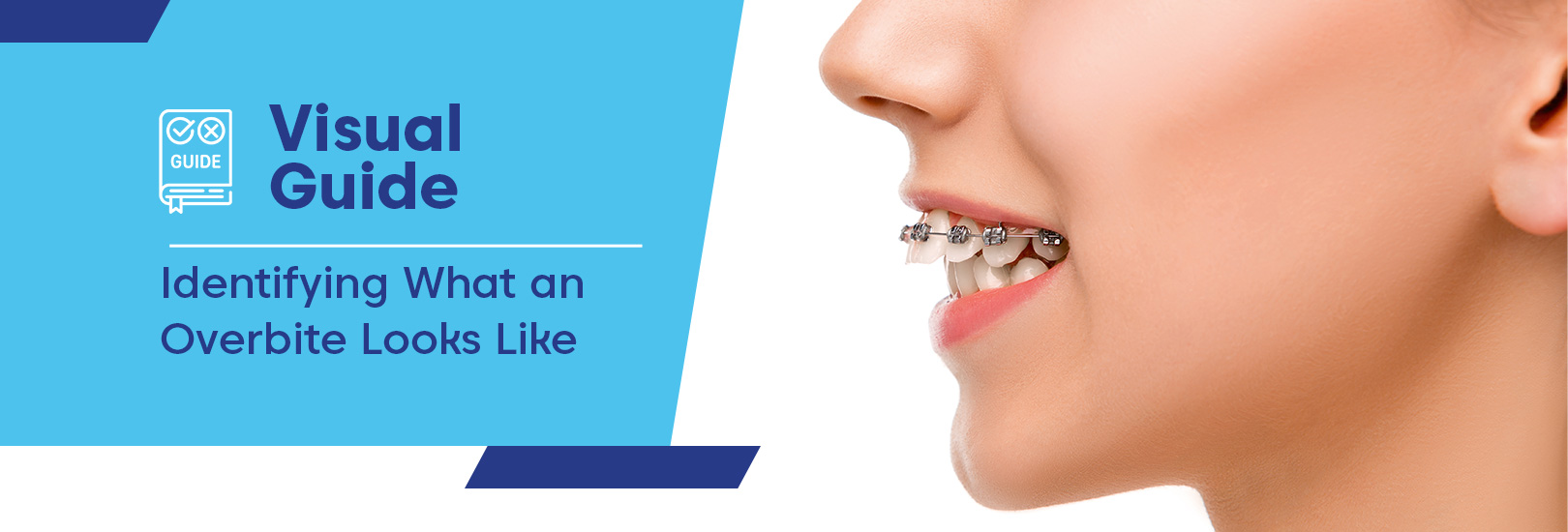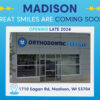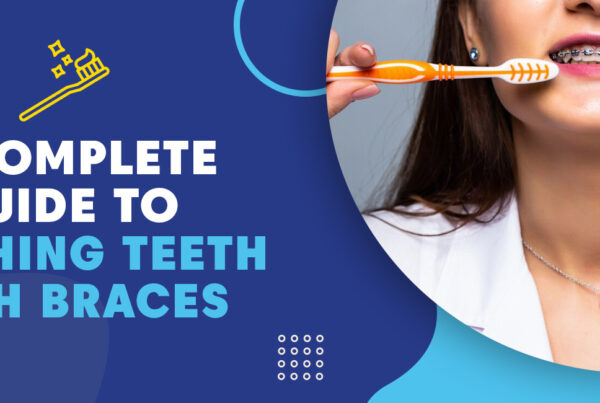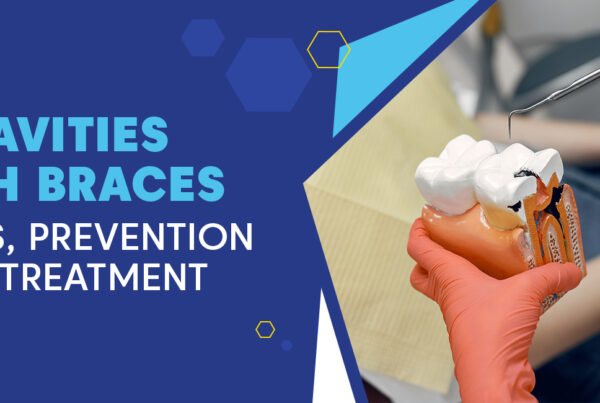Concerned about your teeth alignment and curious about overbites? You’re not alone. In this comprehensive guide, we will explore the different types of overbites and how to know if you have an overbite. Through clear visuals and detailed explanations, our aim is to enhance your understanding of what does an overbite looks like. Furthermore, we will discuss the varying degrees of severity of overbites. Join us as we uncover the potential consequences that can arise from neglecting an overbite—both for your oral health and facial aesthetics.
What Is An Overbite?
An overbite is a common dental concern. It occurs when the upper front teeth overlap the lower ones during biting down. The severity of an overbite can range from minor misalignment to more noticeable malocclusion. When evaluating your dental health, it is crucial to identify and differentiate an overbite from other orthodontic issues.
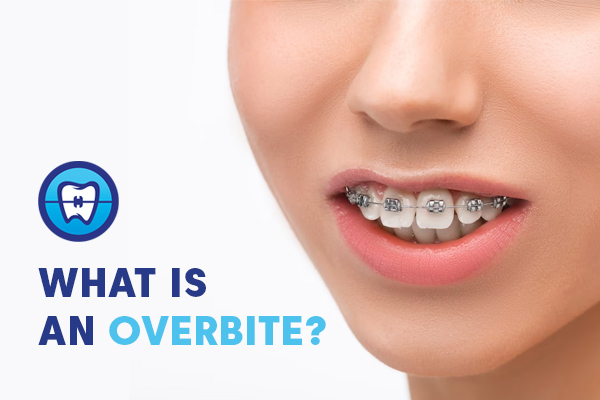
While underbites or crossbites involve the lower teeth protruding or shifting sideways, an overbite specifically refers to the upper teeth aligning further forward compared to the lower teeth.
Types of Overbites
Understanding overbites involves recognizing two main types: horizontal and vertical. Now, let’s delve into each type individually and explore their unique characteristics.
Horizontal Overbite:
When the upper front teeth noticeably stick out beyond the lower ones, it is referred to as a horizontal overbite or an “overjet.” This misalignment can cause problems with biting and may lead to dental issues. Additionally, this type of overbite can impact the facial appearance and hinder proper chewing and speaking.
Vertical Overbite:
In a condition known as a horizontal overbite or “overjet,” the upper front teeth extend horizontally over the lower ones when the jaws are closed. This results in a significant portion of the lower teeth being covered by the upper ones. An individual with a horizontal overbite may experience uneven tooth wear, jaw discomfort, and potential gum damage.
Severity Spectrum of Overbite
Understanding the severity spectrum of overbites vs. normal bites is crucial for determining appropriate treatment options. Let’s dive into the different levels of overbite severity.

Normal Overbite:
In cases of a normal overbite, the upper front teeth slightly overlap the lower teeth, usually by 1 to 3 millimeters. While this level of misalignment may not cause any functional issues, it can still impact the overall appearance of one’s smile.
Deep Overbite:
When the upper front teeth overlap the lower teeth by more than 4 to 8 millimeters, it is known as a deep overbite. This condition can make biting certain foods challenging and lead to excessive wear on the incisor teeth. Over time, it may even contribute to problems with the jaw joint.
Severe Overbite:
A severe overbite occurs when the upper front teeth excessively cover the lower teeth, typically overlapping by more than 9 millimeters. This misalignment can lead to significant functional issues, including difficulties in speaking, chewing, and maintaining proper dental hygiene. Correcting a severe overbite often requires more extensive orthodontic treatment.
Causes of an Overbite
Several factors contribute to the development of an overbite. Understanding these causes allows individuals to take necessary preventive measures or seek appropriate treatment. Here are some common reasons behind the formation of an overbite.

Genetics:
The development of an overbite is primarily influenced by genetics. If parents or close relatives have an overbite, the chances increase that their children will also experience this dental misalignment. This occurs because certain structures in the jaw and teeth can be inherited, affecting overall tooth alignment.
Habits:
During childhood, certain habits like thumb-sucking, nail biting, bottle feeding, excessive pacifier use, or tongue-thrusting can contribute to the development of an overbite. These habits apply pressure on the growing teeth and jaw, gradually causing misalignment. To prevent or reduce the likelihood of developing an overbite, it is crucial to address these habits early on.
Malocclusion:
Malocclusion refers to the misalignment of teeth or jaws, which can arise from various factors. These factors include differences in dental arch size, crowded teeth, or uneven jaw growth. A common consequence of malocclusion is an overbite, characterized by improper alignment between the upper and lower teeth and protrusion of the upper teeth.
Temporomandibular Joint (TMJ) Dysfunction:
TMJ issues can contribute to the development of an overbite. When the temporomandibular joint, which connects the jaw to the skull, doesn’t function properly, it affects the alignment and positioning of the jaw. As a result, dental misalignments like an overbite may occur.
Childhood Trauma:
During childhood, injuries to the face or jaw can result in a misaligned bite, specifically an overbite. Incidents or impacts that affect the growth and development of the jaw have the potential to cause teeth to shift, leading to malocclusion.
Consequences of Untreated Overbites
If overbites are not treated, they can have detrimental effects on both oral health and facial appearance. It is crucial to address and correct overbites promptly to prevent potential complications. Untreated overbites can lead to various consequences that should be considered:
Dental Problems:
If left unattended, overbites can give rise to various dental issues. The misalignment of the teeth may result in uneven wear and an increased risk of chipping or fracturing. Moreover, maintaining proper oral hygiene can become challenging. Consequently, individuals may experience cavities, gum disease, and even tooth loss.
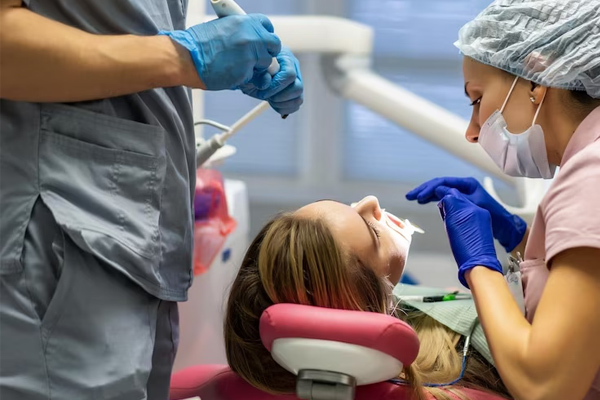
Temporomandibular Joint (TMJ) Disorders:

When there is a misalignment between the upper and lower jaws, it can lead to a condition known as overbite. This issue puts strain on the jaw joints, resulting in TMJ disorders. Common symptoms of TMJ disorders related to untreated overbites include:
- Jaw pain or soreness
- Frequent headaches
- Difficulty in chewing or speaking.
- Clicking or popping sounds in the jaw joint
Speech Impediments:
A severe overbite has the potential to impact tongue placement, resulting in difficulties when producing speech. This can cause challenges in pronouncing specific sounds and lead to speech impediments.

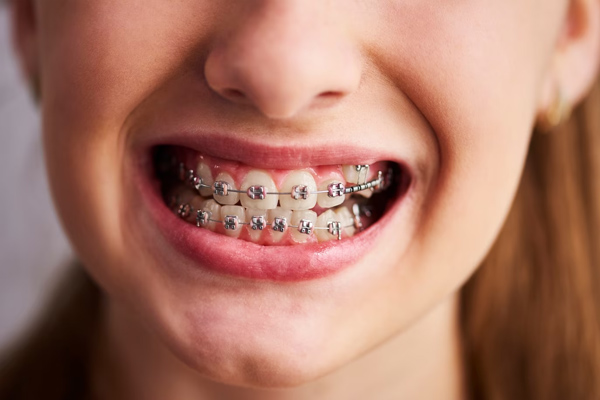
Facial Aesthetics:
Having an overbite can affect the symmetry and proportion of one’s face. The potential facial aesthetic consequences of untreated overbites include.
- Protrusion or retrusion of the chin
- Imbalanced facial profile
- Lack of harmony between the lips and teeth
Real-Life Overbite Transformations
To truly understand the impact of orthodontic treatment on overbites, observing real-life transformations of patients who have undergone corrective procedures proves to be immensely powerful. These captivating before and after images not only showcase the effectiveness of treatment but also offer hope and inspiration for individuals facing the challenges associated with an overbite.
1. Mary’s Story: Before and After Braces
Mary, a 26-year-old aspiring actress, had long been self-conscious about her noticeable overbite. With determination, she opted for Traditional Metal Braces to enhance her smile. Over a span of two years, Mary’s journey witnessed an incredible transformation. The before and after photos stunningly captured the remarkable progress in correcting her overbite, resulting in a more harmonious smile and facial appearance.
Mary couldn’t contain her excitement as she exclaimed, “They say a picture can say it all, and I couldn’t agree more. The impact of braces has truly been remarkable, transforming my confidence completely. Now, I’m always camera-ready, flashing my smile with pride! My heartfelt gratitude goes to the exceptional team at Orthodontic Experts for fixing my bad overbite.”
2. John’s Journey: Fixing an Overbite with Clear Aligners
John, a 32-year-old working professional, wanted to discreetly fix his slight overbite. He consulted with an orthodontist and ultimately chose clear aligners over Traditional Metal Braces. John was astonished by the gradual transformation of his dental alignment, which he documented through progress photos.
Initially, there was uncertainty about undergoing orthodontic treatment as an adult. However, Orthodontic Experts eased the process of acceptance. The transformation of my smile speaks for itself, bringing immense happiness. It is truly remarkable what modern orthodontics can achieve.
3. Sarah’s Success: Correcting an Overbite with Orthognathic Surgery
Sarah, a 19-year-old college student, faced a situation where orthodontic treatment alone was insufficient to correct her severe overbite. To achieve the best outcome, Sarah needed to undergo a combination of orthognathic surgery and braces. The gradual correction of her overbite was captured through a sequence of progress images, demonstrating improved functionality, and enhanced facial aesthetics.
After initially facing the daunting prospect of orthognathic surgery, Sarah discovered the transformative power captured in photos. The combined surgical and orthodontic procedure undeniably had a profound impact on her life, leaving her with a deep appreciation for Orthodontic Experts. Her smile underwent a remarkable transformation that she will forever cherish.
Recognizing Overbites and Seeking Expert Guidance for a Confident Smile
Accurately identifying an overbite is crucial to recognize potential orthodontic issues and take the necessary corrective measures. At Orthodontic Experts, our local orthodontists not only help individuals understand the visual signs of an overbite but also emphasize the importance of seeking professional guidance to address oral health concerns. By proactively seeking appropriate treatment, individuals can achieve a confident smile with proper alignment. The comprehensive insights provided by Orthodontic Experts serve as a valuable resource in raising awareness and making informed decisions about managing overbites.
FAQs
What are the signs of an overbite?
If you begin to notice any indicators of an overbite, such as the lower teeth protruding, a visible gap between the upper and lower teeth, or the teeth appearing tilted, it is crucial to address these concerns. The orthodontists at Orthodontic Experts are available to discuss your worries regarding alignment and provide suitable solutions.
What should I do if I think I have an overbite?
If you think you have an overbite, then you must seek an evaluation from an orthodontist. You can visit Orthodontic Experts for a consultation, which is free of cost. During this appointment, our orthodontists will assess the severity of the issue and provide information on various available treatment options.
How can I tell if someone is overcompensating for an overbite?
When an individual has an overbite, it can lead to the development of compensatory behaviors. These behaviors may manifest as exaggerating the chewing or swallowing process. Unfortunately, such habits can result in difficulties when speaking, eating, and even breathing.
How do I identify an overbite?
When it comes to identifying an overbite, checking the alignment of one’s teeth is crucial. A significant gap between the upper and lower teeth serves as one indicator of this dental issue. Additionally, observing a sideways tilt in the lower jaw can also suggest an overbite. These signs are valuable for recognizing and addressing an overbite successfully.


